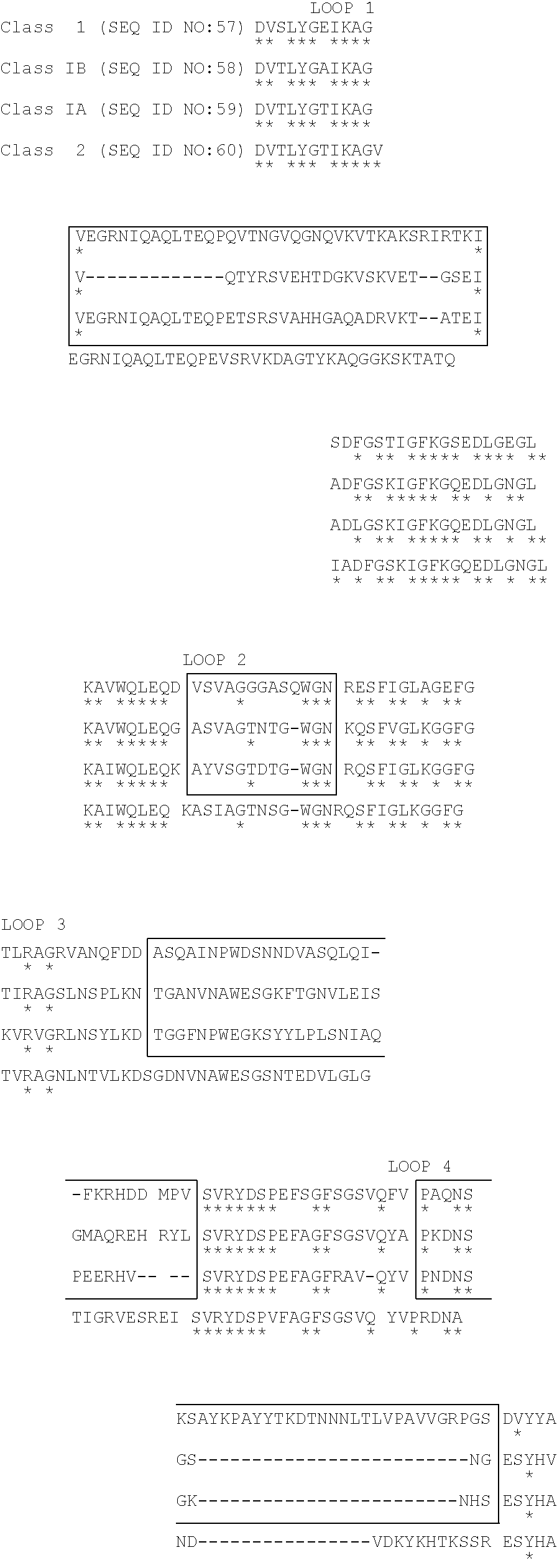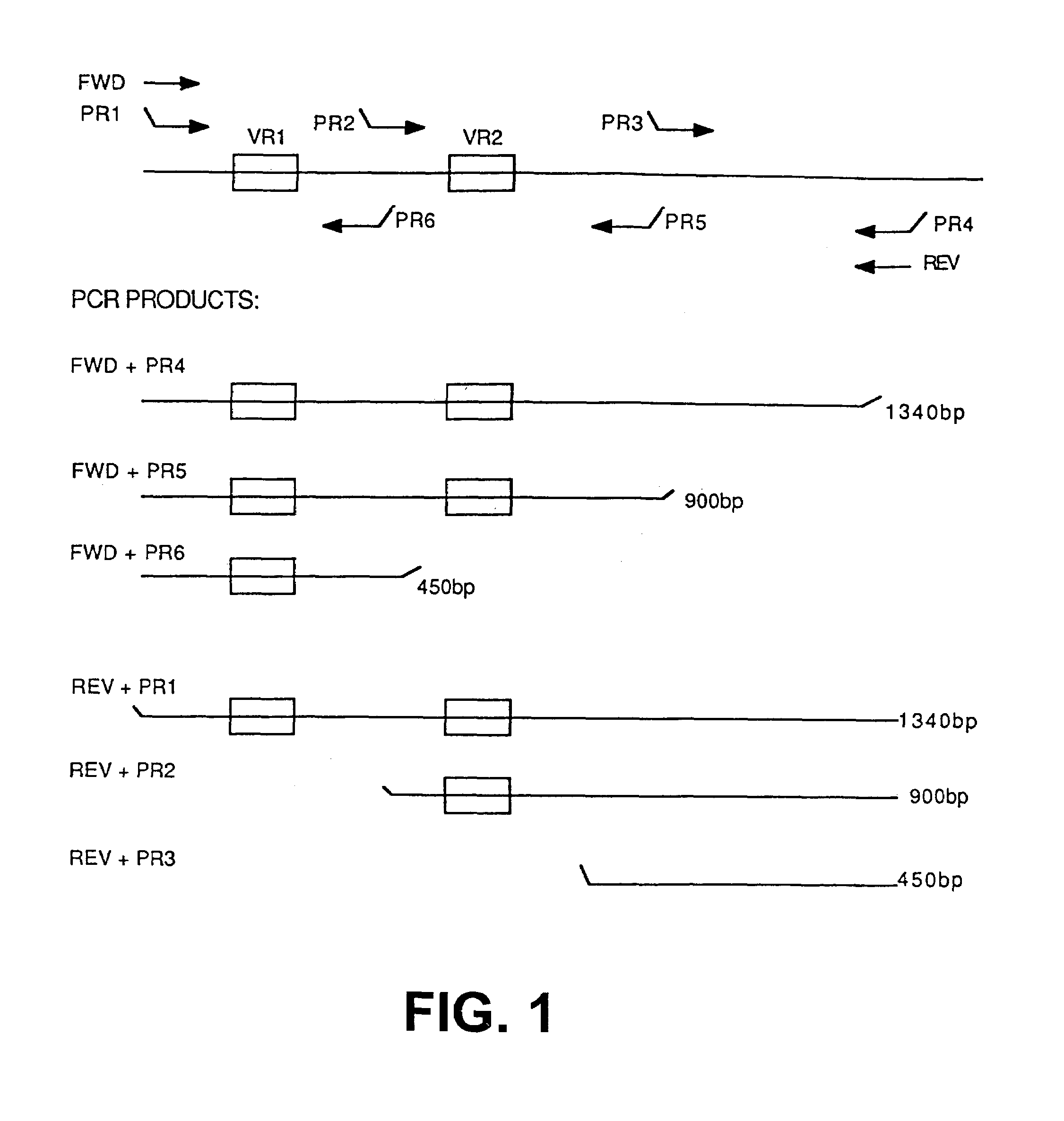Meningococcal class 1 outer-membrane protein vaccine
a technology of outer membrane and meningococcal, which is applied in the direction of antibody medical ingredients, carrier-bound antigen/hapten ingredients, peptide sources, etc., can solve the problems of poor immunogenicity of b polysaccharides and the inability to produce successful vaccines, etc., and achieve the effect of enhancing the immune respons
- Summary
- Abstract
- Description
- Claims
- Application Information
AI Technical Summary
Benefits of technology
Problems solved by technology
Method used
Image
Examples
example 1
Monoclonal Antibodies Against Class 1 OMP's and Their Biological Activity
[0061]Type specific monoclonal antibodies were prepared against various meningococci Class 1 outer-membrane proteins. These monoclonal antibodies recognize the following subtypes: P1,1; P1,2; P1,6; P1,7; P1,9; P1,10; P1,15; P1,16; and P1,17 (now called P1,14). The monoclonal antibodies are available as “Monoclonal Kit Serotyping Meningococci” from the RIVM, Bilthoven, The Netherlands. All these monoclonal antibodies react with the SDS (sodium dodecyl sulphate) denatured protein when tested by Western blotting. It also emerged that a number of these monoclonal antibodies reacted with a 25 Kd. CNBr fragment of the 42 Kd Class 1 outer-membrane protein (see below). This result implied that the Class 1 outer-membrane protein epitopes are mainly of linear type and can therefore be copied with synthetic peptides. The epidemiological results of tests carried out by the Applicants show that the described monoclonal anti...
example 1a
Construction of Meningococcal Strains Carrying Multiple Class 1 Genes
[0064]Replacement of chromosomal genes by clones, slightly different versions has been described for Neisseria gonorrhoea. (Stein, D. C., Clin. Microbiol. Rev. 2 (Suppl.), S146–S149 (1989).) We have found that this method can be applied to the Class 1 gene in Heisseria meningitidis. This was done in the following way:[0065](i) The Class 1 gene of strain 2996 (subtype P1.2) was cloned into the vector pTZ19R. (Mead, D. A. et al., Protein Engineering 1, 67 (1986).) The complete gene is located on a 2.2 kb XbaI fragment that was ligated to XbaI digested vector DNA.[0066](ii) The resulting plasmid was used for transformation of strain H44 / 76 (subtype P1.7,16). Cells of the acceptor strain were incubated with plasmid DNA in the presence of Mg2+ and normal meningoccal medium; they were subsequently diluted and plated, and the resulting colonies were tested for their ability to bind P1.2-specific monoclonal antibody. Such ...
example 1b
Purification of Isolated OMV's from Bacteriological Culture
[0069]The purification is carried out according to Beuvery et al. (1983) loc. cit.
[0070]This culture can be done with the desired wild type strains, mutant meningococci strains without Class 2 / 3 outer-membrane proteins and / or homologeous and heterologeous recombinant microorganisms which express one or more of the desired meningococci Class 1 outer-membrane protein and / or epitopes by overproducing vectors either through or not through existing open reading frames and / or manipulated reading frames so that fusion proteins or proteins with exchanged epitopes can be prepared.
[0071]Readily available of wild strains are:
[0072]H44 / 76 (B:15:P1,7.16) (Holten E., Norway, deposited as CBS 635–89); 187 (B:4:P1,7) (Etienne J., France); M1080 (B:1:P1,1.7) (Frasch C., USA); Swiss4 (B:4:P1,15) (Hirschel B., Switzerland); B2106I (B:4:P1,2) (Berger U., West-Germany); 395 (B:NT:P1,9) (Jonsdottir K., Iceland): M990 (B:6:P1,6) (Frasch C., USA); ...
PUM
| Property | Measurement | Unit |
|---|---|---|
| Volume | aaaaa | aaaaa |
| Volume | aaaaa | aaaaa |
| Volume | aaaaa | aaaaa |
Abstract
Description
Claims
Application Information
 Login to View More
Login to View More - R&D
- Intellectual Property
- Life Sciences
- Materials
- Tech Scout
- Unparalleled Data Quality
- Higher Quality Content
- 60% Fewer Hallucinations
Browse by: Latest US Patents, China's latest patents, Technical Efficacy Thesaurus, Application Domain, Technology Topic, Popular Technical Reports.
© 2025 PatSnap. All rights reserved.Legal|Privacy policy|Modern Slavery Act Transparency Statement|Sitemap|About US| Contact US: help@patsnap.com



